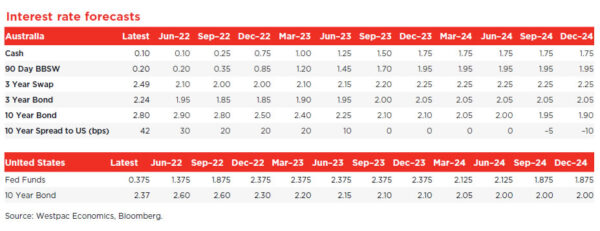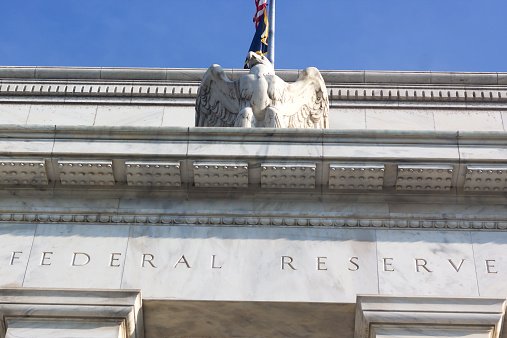Last week’s FOMC meeting delivered a 25 basis point rate hike and a clear signal that balance sheet normalization will begin in the second quarter. The surprise for us was the Committee’s decision to focus its policy on the inflation outlook, having previously adopted a balanced view of inflation and activity.
The move comes at a time of heightened global uncertainty and, for the United States, falling real wages and tighter financial conditions. But the FOMC is confident in the strength of the US economy, believing it will be able to weather these headwinds and maintain full employment.
When central banks provide public guidance as explicit as that recently given to us by the chairman and other members of the FOMC regarding very short-term meetings, we listen and learn. This approach does not necessarily apply to longer-term directions where our economic forecasts may differ from those used by the central bank.
Therefore, recognizing this clear intent, we have advanced our rate hike profile to reflect a change at every meeting this year. It starts with moves of 50 basis points in the May and June meetings, followed by a series of increases of 25 basis points in July, September, November and December. The federal funds rate reached 2.375% at the end of the year.
Our precedent was that a combination of five hikes in 2022 and two more by June 2023, combined with a determined approach to balance sheet reduction, would weigh heavily on the US economy. The new accelerated profile will lead to a more immediate slowdown in growth and inflation, hence our expectation that the cycle will be completed by December 2022, when the slowdown will have become abundantly apparent.
Once inflation is back in check, we expect the FOMC to cut twice to 1.875%, through 2024, to help growth maintain a near-trend pace over the medium term.
Why do we expect the maximum federal funds rate to be significantly lower than the current FOMC forecast (2.8%) and market opinion (2.7%)?
From a political perspective, we expect the determined commitment to reduce the size of the balance sheet combined with a series of rate hikes to have a non-linear impact on financial conditions, as we saw in 2017 /2018.
We also expect greater labor market vulnerability than the FOMC base scenario.
Job growth has been very strong throughout this recovery, resulting in a very tight labor market (currently 1.7 openings for every available worker) and the unemployment rate is printed at 3.8% in February. Yet, due to low participation, the share of the employed population is only 0.5 points above its level in November 2015, when the 2015-2018 hiking cycle began. This is important because the share of the employed population dictates the basic income capacity of the household sector and, therefore, their expenditures.
Besides the number of employees, the other important aspect is the pace of salary growth. While the employment cost index was abnormally high on the year to December at 4.5% per year, this gain was overwhelmed by CPI inflation of 7.1% per year , leaving real wages 2.6% lower than a year earlier. If we take monthly earnings from the establishment survey as a guide to wage growth in the first quarter of 2022, it is clear that real wages continue to fall, with CPI inflation more than twice the annualized growth rate of average hourly earnings.
As the FOMC remains focused on inflation in the months ahead, rising full-curve interest rates will continue to increase pressure on US households who are under relentless pressure from shrinking real wages.
GDP growth will remain above trend in 2022. But growth is then expected to slow from an annualized 2.1% in the six months to December 2022 to 1.7% in the first half of 2023 and 1.4% in the second.
Although the overall balance sheet of households shows a high level of savings, this savings would be held overwhelmingly by high incomes, which limits the room for maneuver in the event of a tightening of financial conditions and a fall in real wages. The unemployment rate is also expected to climb to 4.5% by the end of 2023 as participation continues to normalize and growth slows.
Inflation dynamics are almost certain to subside.
We expect six-month annualized CPI inflation to stay above 5% through June 2022, falling to 2.9% in December 2022 before slowing further to 2.4% in June 2023 and 2.2% in December 2023.
Energy prices are expected to decline slightly from the second half of 2022, while supply chain disruptions in other goods prices dissipate as risks from COVID-19 and the coronavirus invasion Ukraine will fade.
This easing of pressures on supply will be supplemented by the slowdown in demand to dampen the dynamics of inflation.
Our forecasts still include growth in the prices of goods (excluding energy) which remains significantly higher than the rate observed before the pandemic. Food price growth is also expected to remain elevated through 2023 given the potential for significant secondary price increases over time. And housing costs are expected to continue to rise at a rate in the upper half of their historical range, reflecting limited excess capacity.
Even if these pressures result in slightly higher inflation in 2023 than our current forecast, we expect the FOMC, committed to its recently adopted average inflation policy, to be comfortable holding rates steady and focusing on repairing assessments that will take years.
What are the implications for the 10-year bond rate?
We maintain our guideline that the 10-year bond rate will peak about 6 months before the peak of the fed funds rate and at a level slightly above.
We therefore lifted and advanced the peak of the 10-year bond to 2.60% in June (from 2.3% in December), still reaching its peak 6 months before the peak of the fed funds rate (2.375%) . It should only stay at this level until September before falling back to 2.30% by December 2022 and 2.20% by March 2023, a slight inversion of the curve compared to cash. We expect the curve to continue to invert through 2023 as the market recognizes that growth has slowed below trend and inflation is no longer an issue.
Two rate cuts in 2024 to a federal funds rate of 1.875% will set expectations for both the economy and the curve.
If we are wrong and the fed funds rate reaches current market prices, a sharp curve inversion will surely precede a much larger slowdown in the US economy.
This adjustment has implications for the RBA.
We have not changed our fundamental view that the RBA’s tightening cycle will begin in August with the cash rate peaking at 1.75%. While we still agree with the RBA Governor’s intentions to apply policy according to Australian conditions rather than follow FOMC policy, more determined FOMC actions are likely to slightly accelerate the profile of RBA tightening.
Our current forecast is for the RBA to raise the cash rate by 15 basis points in August; followed by 25 basis points in October; and 25 in February; May; August; and December 2023; with the 25 finals in February 2024.
We now expect the RBA to advance the third hike from February 2023 to December 2022 and follow the same pattern throughout 2023, with the cycle ending in November 2023 rather than February 2024.
This would mean the RBA would end 2022 having restored the 65 basis points of the emergency cuts it implemented during Covid.
Compared to market expectations, our outlook for the FOMC and RBA cycles is significantly more modest, based on two things: more progress in resolving inflation and moderating demand than predicted by the market and the complementary tightening of financial conditions that will be provided by both central banks as they shrink their balance sheets – the FOMC through its QT policies and the RBA with the $180 billion TFF repayment in September 2023 and June 2024.
With the RBA expected to narrow the wide interest rate differential with the FOMC in 2023 and the prospect of Federal Funds rate cuts in 2024, a more stable risk environment in 2023 continues to support our forecast for the AUD to reach $0.80 in 2023.


